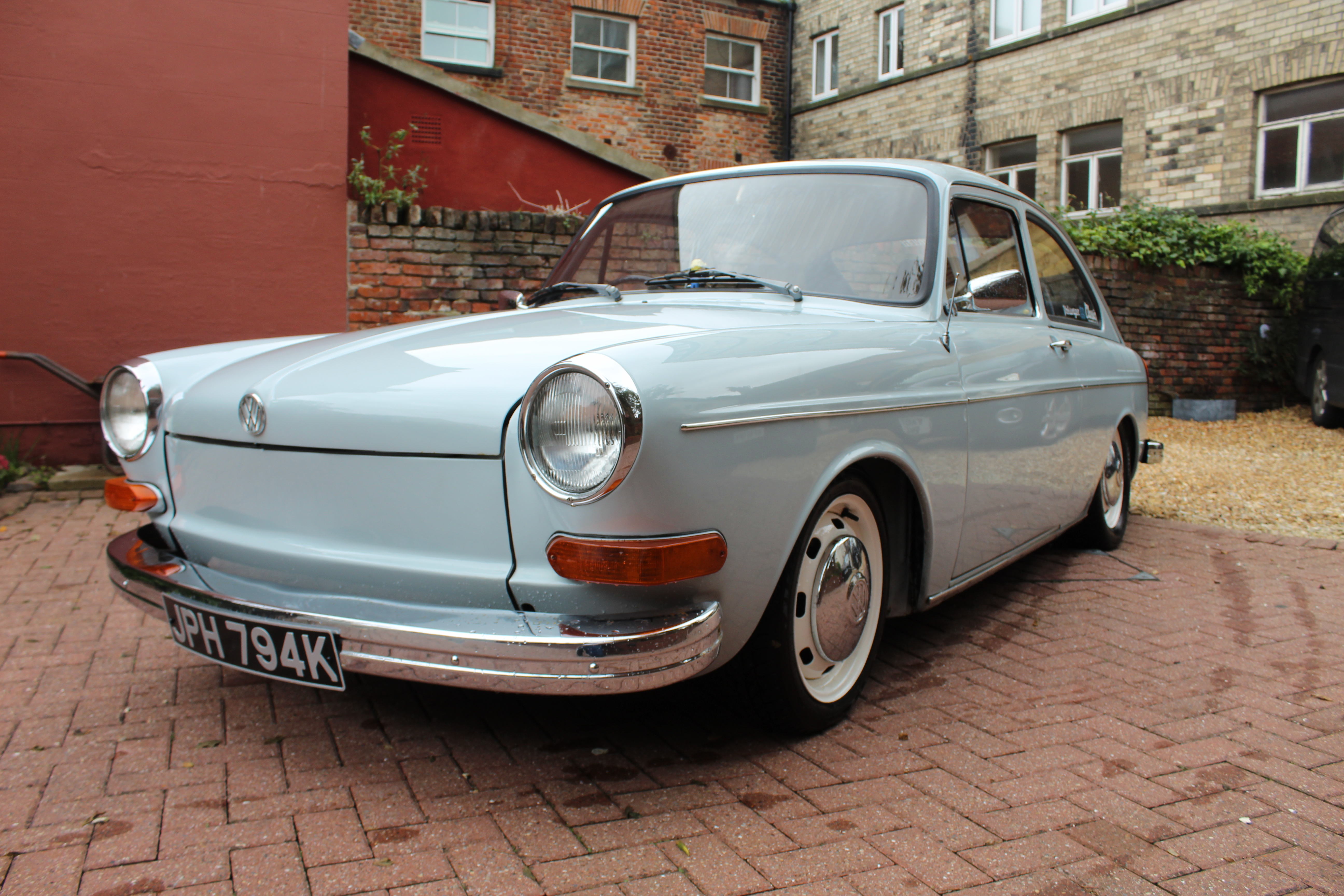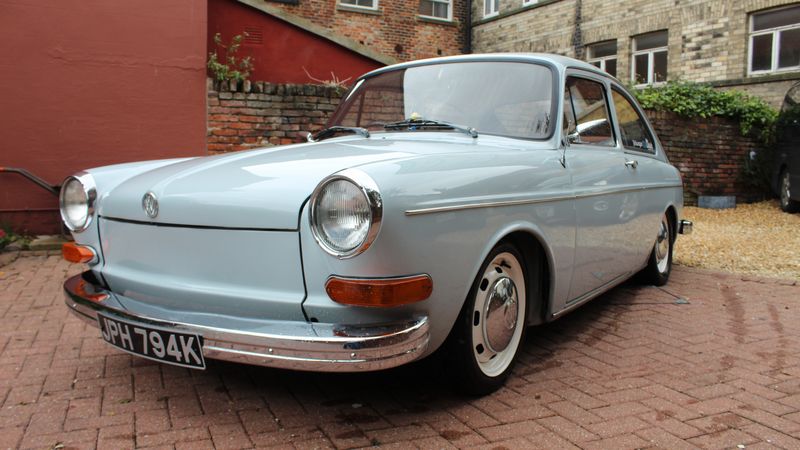1972 Volkswagen 1600TE Fastback
Highlights
﹒Recent restoration, documented on USB flash drive
The Background

The History

The Paperwork

The Interior

The Exterior

The Mechanics

The Appeal
** The photos in this listing have been provided by the seller **
Notice to bidders
Consulta le nostre FAQ qui e i nostri Termini e condizioni qui
- Anno 1972
- Marca Volkswagen
- Modello 1600TE Fastback
- Colore Blue
- Chilometraggio 102,247 Miglia
- Cilindrata 1584
- Tipo di venditore Privato
- Posizione Yorkshire
- Paese Regno Unito
- cd•••• £6,700 06/11/20
- Sh•••• £6,600 06/11/20
- cd•••• £6,500 06/11/20
- Sh•••• £6,400 06/11/20
- cd•••• £6,300 06/11/20
- Ma•••• £6,200 06/11/20
- cd•••• £6,100 06/11/20
- Ma•••• £6,000 06/11/20
- cd•••• £5,900 05/11/20
- 19•••• £5,750 05/11/20
La galleria

Come funzionano le offerte massime
Il processo di offerta massima ti permette di fare offerte senza preoccupazioni.
Inserisci la tua offerta massima e il sistema farà offerte automaticamente per assicurarsi che tu sia il miglior offerente - fino all'ammontare da te stabilito come tetto massimo.
Anti-sniping
Car & Classic contrasta il fenomeno dello “sniping”, ovvero il fenomeno dei rilanci all'ultimo secondo per vincere l'asta.
Se viene fatta un'offerta nei 3 minuti prima della chiusura dell'asta, la scadenza di questa viene automaticamente estesa di 2 minuti per permettere agli altri offerenti di reagire e, se lo desiderano, di rilanciare.
Incrementi di offerta automatica
- Se la sua offerta massima è uguale o inferiore al prezzo di riserva, la sua offerta massima sarà applicata per intero se lei è il miglior offerente.
- Se siete il miglior offerente e fate un'offerta massima superiore a quella di riserva, la riserva verrà automaticamente inserita come prima offerta.
-
- Una volta raggiunta la riserva, Car & Classic si assicurerà che tu sia il miglior offerente utilizzando solo gli incrementi di offerta indicati di seguito.
- Vi terremo in testa fino alla vostra offerta massima O all'incremento più vicino alla vostra offerta massima, a condizione che la vostra offerta massima sia sufficiente a coprire il valore dell'incremento.
| Ammontare dell'offerta | Incremento |
|---|---|
| Da £0 a £9,999 | £100.00 |
| Da £10,000 a £49,999 | £250.00 |
| Da £50,000 a £99,999 | £500.00 |
| £100,000 + | £1,000.00 |
Superamento immediato dell'offerta
Quando piazzi un'offerta massima e questa viene immediatamente superata, questo significa che un altro offerente ha impostato una soglia di offerta massima superiore alla tua.
Puoi fare nuovamente un'offerta o impostare una soglia più alta di offerta massima e il nostro sistema rilancerà fino alla nuova soglia, cercando di portarti a essere il miglior offerente.
Offerte massime di pari ammontare
Quando ci sono due offerte massime di pari ammontare, quella impostata per prima è quella che viene considerata “migliore offerta”.
Pre-autorizzazione
Potremmo trattenere un piccolo importo di pre-autorizzazione sulla tua carta fino alla fine dell'asta, quando quest'ultimo verrà poi stornato. Se vinci, verrà prelevata una caparra che verrà detratta dal pagamento del prezzo di vendita per il veicolo e non comporta costi aggiuntivi per te.
Cosa sono le Offerte pre-asta?
Offerte pre-asta significa che avete la possibilità di fare offerte prima dell'inizio ufficiale dell'asta.
Verrà comunicato se si è il miglior offerente o meno all'inizio dell'asta.
Problema con l'offerta
Le offerte sono contrattualmente vincolanti. Per tutelare l'utente, sono previste alcune regole nel caso in cui si ritenga che sia stato digitato in modo errato. Si prega di controllare e modificare quanto inserito.




























































































































































































